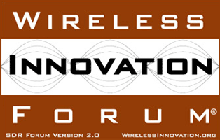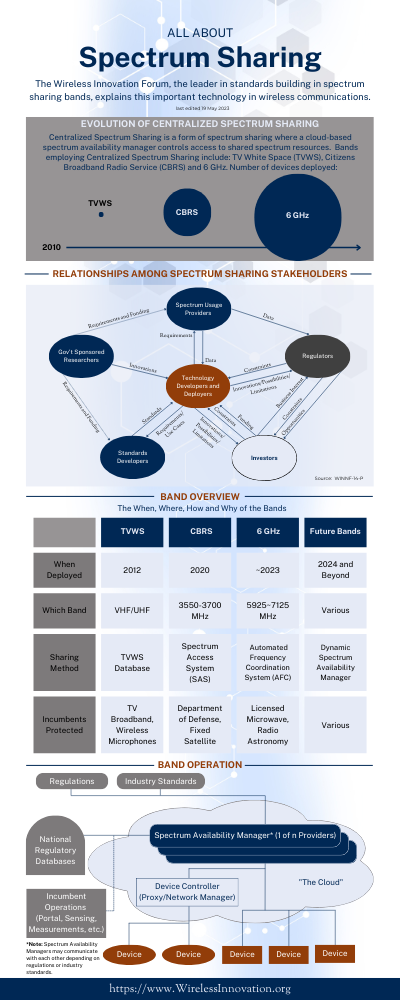- Home
- Knowledge Center
- Reports, Recommendations and Specifications
- Information Documents
- All About Spectrum Sharing Infographic
- Free Webinars
- Tech Talks
- Setting the Standard Video Blog
- Beyond the Radio Dial Video Blog
- Conference Proceedings
- Workshop Proceedings
- Springer Journals
- Market Studies
- What is the SCA?
- Issue Submissions
- Reference Implementations
- What is SDR?
- What are CR and DSA?
- About Us
- Events
- News
- Projects & Committees
- Members
- Join the Forum
Wireless Innovation Forum Top Ten Most Wanted InnovationsInnovation #3: Propagation Prediction Techniques for Dynamic Spectrum Sharing3.1 Executive SummaryTo enable next-generation, high-capacity mobile wireless networks to dynamically share radio spectrum with incumbent users, faster and more accurate propagation prediction techniques are needed to perform real-time interference calculations in support of automated frequency assignment. These networks consist of many moving and spectrally and/or directionally agile nodes, which means that propagation conditions can be subject to rapid variations; typically, these nodes are also concentrated in urban environments. Due to the high complexity of such environments, currently available prediction techniques are either too slow (for example, ray tracing models) or too inaccurate (for example, empirical path loss formulas) to support efficient spectrum sharing. 3.2 Application The application of this innovation is in database-driven dynamic access to shared spectrum by the nodes of next-generation commercial mobile wireless networks deployed in urban areas. One possible sharing scenario, for example, is an urban 5G deployment in a frequency band whose incumbent users are fixed and located in the surrounding rural area. Spectrum resource assignments to the mobile nodes are controlled by an automated, database-driven decision-making entity protecting the incumbent users from harmful interference. When a mobile network node requiring access to spectrum resources registers or updates its operational parameters (location, transmit power, antenna parameters, etc.), this entity must be able to perform nearly instantaneous calculations of the resulting interference impact on the incumbent users. These calculations must take into account the interference shielding effects of the urban environment, which are due to signal obstruction by obstacles such as buildings. Improved propagation models to more accurately characterize radio signals in small-cell deployments in dense urban environments would benefit service providers to aid them in more effective network deployment which ultimately would benefit consumers (both business and the general public) with improved coverage and quality of service. It would also give the regulators a better understanding of radio propagation characteristics in urban environments that would aid them in their decisions on how best to allocate spectrum so as to use the spectrum most efficiently in these environments. 3.3 Description For propagation prediction methods to be of value for database-driven dynamic spectrum sharing among mobile radio nodes, they need to be:
These requirements are difficult, if not impossible, to meet using conventional prediction methods suitable for urban environments, because deterministic prediction of the multipath structure in such complex environments is computationally very expensive. Possible R&D directions for overcoming the limitations of traditional prediction techniques include the use of:
|



